26 Oct 5 Tips for Supply Chain Risk Mitigation
Supply chain risks are an inevitable part of running any business. From the source of raw material to the distribution of your finished goods and services, these risks can affect any part of business operations. This is why supply chain mitigation is so important.
If you wish to achieve prosperity and sustainable growth, you must find ways to successfully mitigate supply chain risks and avoid potential losses due to supply chain disruption. You will need a proactive and collaborative approach that involves all stakeholders throughout your supply chain.
Current Climate
It has been over six months since the first COVID-19 lockdown came into action. However, the companies are still struggling to adapt to the “new normal.” Businesses that heavily rely on their supply chain suffered the most and are proactively seeking ways to deal with the issues.
If you are looking for ways to mitigate supply chain risks in your business, you are in the right place.
5 Tips to Mitigate Your Supply Chain Risk
Here are five tips to mitigate the risks related to your business’s supply chain.
Tip # 1: Building Better Rapport with Your Business Partners
Whether domestic or overseas trading, the supply chain’s biggest issue has been the confusion and delays in shipments.
So, you must know what your business partners are struggling with at every stage of the supply chain. This will help you work with them and find a potential solution that works for both of you and strengthen your business relationships.
Tip # 2: Workers’ Safety is a Top Priority
The other most noticeable problem faced by most supply chain operations is employees’ safety. Even the safest workplaces can face disruption in their process due to unforeseen incidents.
Therefore, you must always take precautionary measures and provide safety gear. You must also train staff regularly about up-to-date health and safety protocols such as social distancing rules in the current conditions.
Tip # 3: Communication is the Key
Always communicate and share your risk mitigation roadmap with your employees and business partners. All the stakeholders must be on the same page as this will rectify any chances of ambiguity about the strategies.
You must also monitor that everyone follows the agreed-upon supply chain risk mitigation strategies.
Tip # 4: Invest in Appropriate Technologies and Solutions
If you believe you do not have the most in-depth understanding of your operations, this can severely impact your ability to identify and respond to supply chain risks.
Stay on top of your supply chain operations and deploy the right type of solutions and technology. This will give you a transparent and detailed insight into your supply chain operations and overall cycle.
Tip # 5: Assess and Monitor Existing and New Suppliers
To keep your supply chain operational, you must have multiple suppliers on board. Hence, you must assess new suppliers and closely monitor the existing ones for their performances and shortcomings.
When choosing new suppliers, be sure to gauge them against certain factors to mitigate potential supply chain risks. These factors are:
- Feedback and reviews of their previous clients and customers
- Gauge their resources such as equipment, material, storage, and staff
- Commitment to international quality standards such as ISO9001 etc
- Their management, processes, procedures, and financial health
- Approach to collaboration and communication
Final Thoughts
Failure to forecast and reduce supply chain risks in your business can affect your products’ availability and revenue generation. Follow the tips mentioned above to identify potential areas and mitigate relevant supply chain risks. It will protect you against any supply chain disruptions and build a more substantial reputation in the market and amongst your customers.
Making sure you are covered when needing a rental car is the key to rental car coverage after an accident.
To find out more, contact one of our talented Risk Advisors today!


No Comments